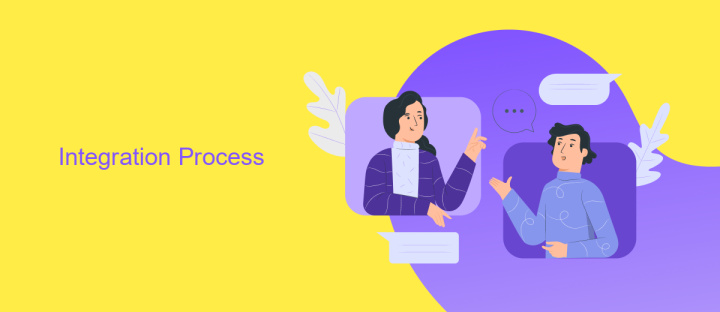Google Ads Data Integration
Integrating Google Ads data is essential for optimizing your marketing strategies and maximizing ROI. By consolidating ad performance metrics with other business data, you gain comprehensive insights that drive informed decision-making. This article explores the benefits, methods, and best practices for seamlessly integrating Google Ads data into your analytics ecosystem, empowering you to enhance campaign effectiveness and achieve your business goals.
Introduction
In today's digital age, businesses are increasingly relying on data-driven strategies to optimize their marketing efforts. One of the most powerful tools available for this purpose is Google Ads, which allows companies to reach potential customers through targeted advertising. However, to fully leverage the potential of Google Ads, it's essential to integrate its data with other business systems and platforms. This integration can provide a more comprehensive view of marketing performance and customer behavior.
- Enhanced targeting and personalization
- Improved ROI tracking and reporting
- Streamlined workflow and automation
- Comprehensive customer insights
Integrating Google Ads data can be a game-changer for businesses looking to maximize their marketing effectiveness. By combining ad performance metrics with other data sources, companies can uncover valuable insights and make more informed decisions. This process not only enhances the accuracy of marketing campaigns but also contributes to a more cohesive and efficient marketing strategy overall.
Integration Process

Integrating Google Ads data into your existing systems is a multi-step process that requires careful planning and execution. First, you need to identify the data points you want to capture, such as impressions, clicks, conversions, and cost. Once you have defined your data requirements, you can use Google Ads API to extract the necessary data. This involves creating a project in the Google Cloud Console, enabling the Google Ads API, and generating the required authentication credentials. You will then write scripts to fetch this data and store it in your preferred database or data warehouse.
To simplify the integration process, you can use third-party services like ApiX-Drive. ApiX-Drive allows you to automate the data extraction and integration process without the need for extensive coding. By connecting Google Ads to ApiX-Drive, you can easily set up data synchronization with various platforms such as CRM systems, email marketing tools, and analytics software. This not only saves time but also ensures that your data is always up-to-date and readily available for analysis and reporting.
Benefits of Integration

Integrating Google Ads data into your business operations can significantly enhance your marketing strategies and overall performance. By leveraging this integration, you can gain deeper insights, streamline processes, and make data-driven decisions that drive growth.
- Enhanced Analytics: Combining Google Ads data with other data sources provides a comprehensive view of your marketing efforts, enabling more accurate performance analysis.
- Improved Targeting: Integration allows for better audience segmentation and targeting, ensuring your ads reach the right people at the right time.
- Automated Reporting: Automating the reporting process saves time and reduces the risk of human error, providing you with reliable and up-to-date information.
- Optimized Budget Allocation: With integrated data, you can identify high-performing campaigns and allocate your budget more effectively, maximizing ROI.
- Real-time Insights: Access to real-time data helps you quickly adjust your strategies in response to market changes, keeping your campaigns agile and effective.
Overall, integrating Google Ads data empowers businesses to make smarter decisions, optimize their marketing efforts, and achieve better results. This integration is a crucial step towards a more data-driven and efficient approach to digital advertising.
Best Practices

Integrating Google Ads data effectively requires a strategic approach to ensure accuracy and actionable insights. Start by establishing clear objectives for your data integration process. This will help you determine which metrics and dimensions are most relevant to your goals.
Next, ensure that your data sources are properly connected and synchronized. This involves setting up APIs, data connectors, or third-party tools to facilitate seamless data flow between Google Ads and your analytics platforms.
- Regularly audit and clean your data to maintain its integrity.
- Use automated reporting to minimize manual errors.
- Leverage data visualization tools for better insights.
- Ensure compliance with data privacy regulations.
Finally, continuously monitor and optimize your integration setup. Regular reviews and updates will help you adapt to any changes in your data sources or business needs, ensuring that your data remains accurate and useful for decision-making.


Conclusion
Integrating Google Ads data is a crucial step for businesses aiming to optimize their marketing strategies and gain a comprehensive view of their performance metrics. By consolidating data from various sources, organizations can make more informed decisions, enhance their targeting, and ultimately improve their return on investment. The use of automated tools and platforms, such as ApiX-Drive, simplifies the integration process, ensuring that data flows seamlessly and accurately across systems.
ApiX-Drive offers an efficient and user-friendly solution for integrating Google Ads data with other business applications. Its intuitive interface and robust features allow users to set up integrations without requiring extensive technical knowledge. This enables businesses to focus on analyzing and leveraging their data rather than getting bogged down in the complexities of data management. By utilizing such tools, companies can stay ahead in the competitive landscape, continually refining their marketing efforts based on real-time insights.
FAQ
What is Google Ads data integration?
How can I automate the integration of Google Ads with other marketing tools?
Why is integrating Google Ads data important for my business?
What types of data can be integrated from Google Ads?
Is it difficult to set up Google Ads data integration?
Time is the most valuable resource for business today. Almost half of it is wasted on routine tasks. Your employees are constantly forced to perform monotonous tasks that are difficult to classify as important and specialized. You can leave everything as it is by hiring additional employees, or you can automate most of the business processes using the ApiX-Drive online connector to get rid of unnecessary time and money expenses once and for all. The choice is yours!

